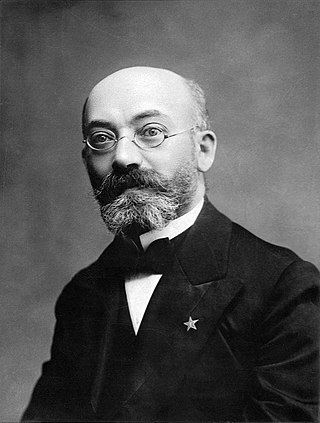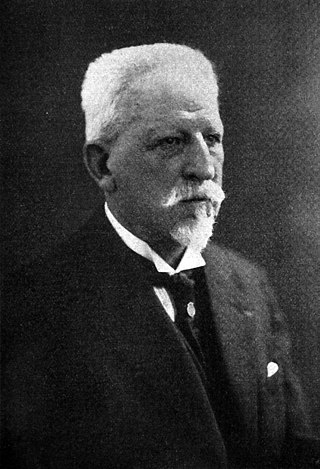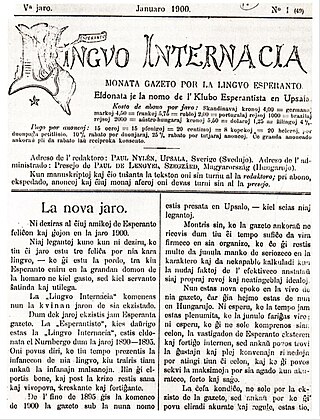
Esperanto is the world's most widely spoken constructed international auxiliary language. Created by the Warsaw-based ophthalmologist L. L. Zamenhof in 1887, it was intended to be a universal second language for international communication, or "the international language". Zamenhof first described the language in Dr. Esperanto's International Language, which he published under the pseudonym Doktoro Esperanto. Early adopters of the language liked the name Esperanto and soon used it to describe his language. The word esperanto translates into English as "one who hopes".

Esperantujo or Esperantio is the Esperanto community; the community of speakers of the Esperanto language and their culture, as well as the places and institutions where the language is used. The term is used "as if it were a country."

L. L. Zamenhof developed Esperanto in the 1870s and '80s. Unua Libro, the first print discussion of the language, appeared in 1887. The number of Esperanto speakers have increased gradually since then, without much support from governments and international organizations. Its use has, in some instances, been outlawed or otherwise suppressed.

L. L. Zamenhof was an ophthalmologist who lived for most of his life in Warsaw. He is best known as the creator of Esperanto, the most widely used constructed international auxiliary language.

Dr. Esperanto's International Language, commonly referred to as Unua Libro, is an 1887 book by Polish ophthalmologist L. L. Zamenhof, in which he first introduced and described the constructed language Esperanto. First published in Russian on July 26 [O.S. July 14] 1887, the publication of Unua Libro marks the formal beginning of the Esperanto movement.

Zamenhof Day, also called Esperanto Book Day, is celebrated on 15 December, the birthday of Esperanto creator L. L. Zamenhof. It is the most widely celebrated day in Esperanto culture. On this day, Esperantists hold information sessions and cultural gatherings to promote literature in Esperanto.
Proto-Esperanto is the modern term for any of the stages in the evolution of L. L. Zamenhof's language project, prior to the publication of Unua Libro in 1887.
Anationalism is a term originating from the community of Esperanto speakers. It denotes a range of cosmopolitan political concepts that combine some or all of the following tendencies and ideas:

Fundamento de Esperanto is a 1905 book by L. L. Zamenhof, in which the author explains the basic grammar rules and vocabulary that constitute the basis of the constructed language Esperanto. On August 9, 1905, it was made the only obligatory authority over the language by the Declaration of Boulogne at the first World Esperanto Congress. Much of the content of the book is a reproduction of content from Zamenhof's earlier works, particularly Unua Libro.
Adolf Holzhaus was an Esperantist and historian of the Esperanto movement. Between 1959 and 1985, he compiled biographies of the lives of Esperanto creator L. L. Zamenhof and his family, Esperanto pioneer Wilhelm Heinrich Trompeter, and others. He edited and published documents on the history of Esperanto, including Zamenhof's Hillelism and "Provo de gramatiko de novjuda lingvo kaj alvoko al la juda intelektularo".

Théophile Cart was a French Esperantist professor and linguist.

Richard Henry Geoghegan was an Anglo-American philologist and the first known Esperantist from the English-speaking world. As a young man, he emigrated to the United States, first living in Washington state and then in the Alaska Territory.

Leopold Einstein was a Jewish teacher, vendor, and writer. He was one of the early proponents of Esperanto.

La Esperantisto, stylised as La Esperantisto., was the first Esperanto periodical, published from 1889 to 1895. L. L. Zamenhof started it in order to provide reading material for the then-nascent Esperanto community.

Lingvo Internacia was an Esperanto periodical, published from 1895 to 1914. It was the second Esperanto periodical, following La Esperantisto (1889–1895). Lingvo Internacia was the central Esperanto publication in the years leading up to World War I, accompanied by La Revuo (1906–1914).
Lingvo internacia means international language in Esperanto. It may refer to:

La Revuo: Internacia monata literatura gazeto was an Esperanto periodical, published from 1906 to 1914. It was the third Esperanto periodical, following La Esperantisto (1889–1895) and Lingvo Internacia (1895–1914). Together with Lingvo Internacia, La Revuo was one of the two central Esperanto publications leading up to World War I.

The following outline is provided as an overview of and topical guide to Esperanto:
There are two conventional sets ASCII substitutions for the letters in the Esperanto alphabet that have diacritics, as well as a number of graphic work-arounds.














